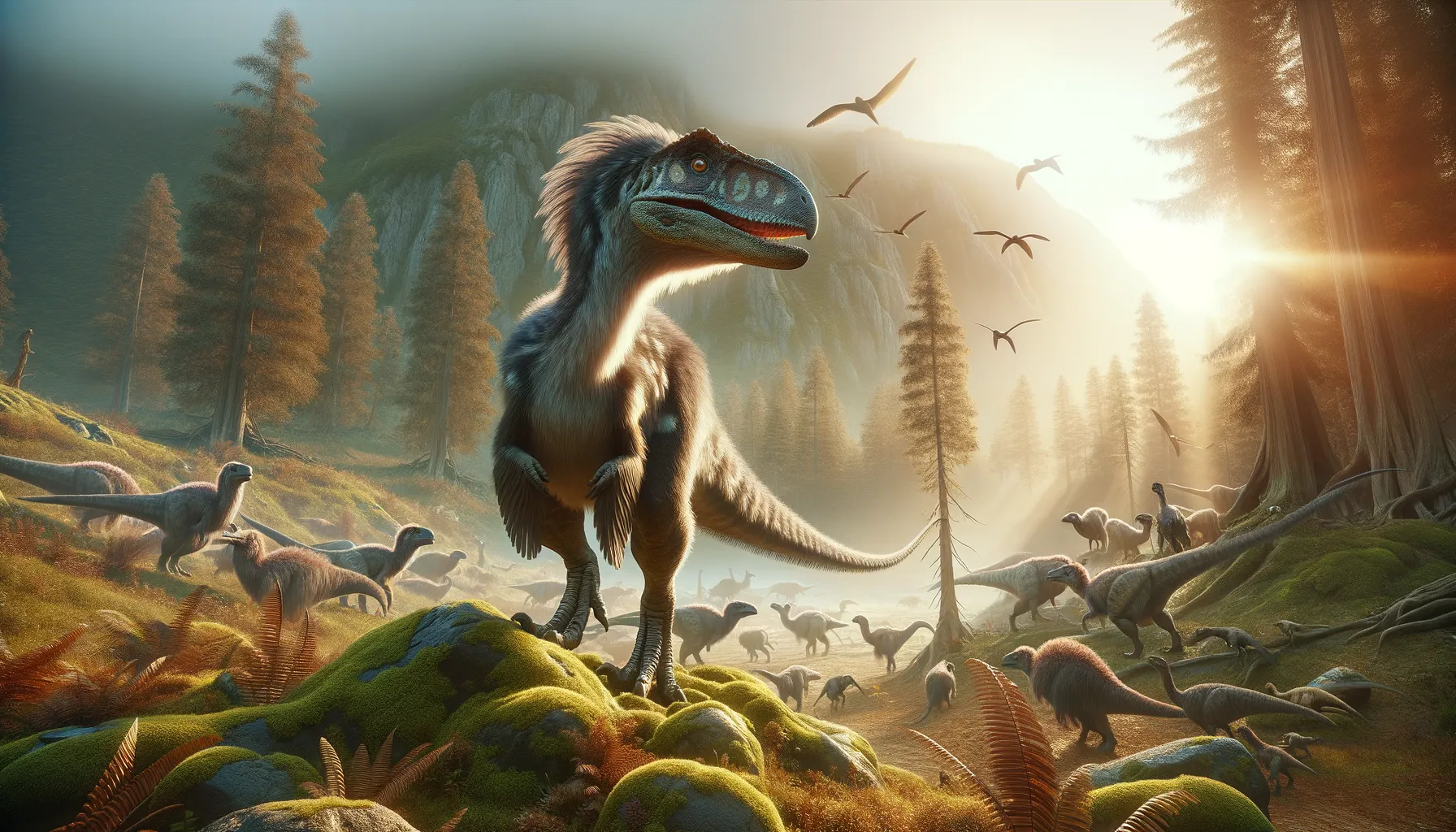
Gigantoraptor
The giant that bridged the dino-bird gap!
Period
Cretaceous
Length
Up to 8 meters long.
Height
Around 3 meters tall.
Weight
Approximately 2 tons.
Gigantoraptor was an enormous, bird-like dinosaur that lived during the Late Cretaceous period. Despite its large size, it shared features with smaller oviraptors, such as a beak and feathers. It is known for its unique mix of traits that combine attributes of both small, flightless birds and the giant theropods, highlighting the diverse forms dinosaurs could take.
Diet
Gigantoraptor likely had an omnivorous diet. It might have eaten a mixture of plants, fruits, and small reptiles. Its beak suggests that it could have accessed a variety of food sources.
Hunting
Being an omnivore, Gigantoraptor didn't strictly hunt like a carnivore. It might have scavenged or foraged for food. Its speed and size helped it browse across vast areas for food opportunities.
Environmental challenges
Gigantoraptor lived in a period of significant geological changes, which included the shifting of continents and fluctuating sea levels. These changes would have impacted its habitats, influencing food availability and climate conditions. Adapting its diet and behavior to these changes would have been crucial for its survival.
Speed
Relatively fast for its size.
Lifespan
Estimated to live around 20-30 years.
First discovery
Discovered in the Gobi Desert in 2005.
Fun Facts
- Gigantoraptor was one of the largest feathered dinosaurs ever discovered, standing as tall as a giraffe.
- Despite being related to smaller, plant-eating dinosaurs, Gigantoraptor might have been an omnivore, feasting on both plants and small animals.
- It lived during the Late Cretaceous period, roughly 85 million years ago, in what is now Asia.
- Gigantoraptor was discovered in Mongolia's famous Gobi Desert in 2005, a hotspot for dinosaur fossils.
- Unlike many large dinosaurs, Gigantoraptor had a beak instead of teeth, similar to modern birds.
- Scientists believe Gigantoraptor could have competed with other large carnivores of its time for food.
- Gigantoraptor weighed about as much as a small elephant, but it might have been quite speedy on its feet.
Growth and Development
Gigantoraptor likely experienced fast growth rates, similar to other theropods, reaching near-maturity in a relatively short period. This rapid growth might have been an adaptation to avoid predation. As they grew, their diets and roles within their ecosystems possibly shifted.
Habitat
Gigantoraptor inhabited the semi-arid environments of what is now the Gobi Desert. This region was characterized by seasonal variations and periodic water sources. The landscape included open areas with scattered vegetation, providing both foraging opportunities and challenges.
Interaction with other species
Gigantoraptor likely shared its habitat with a diverse array of dinosaurs, including other theropods and herbivorous species. It may have competed with other omnivorous and herbivorous species for resources. Its size and speed would have played a critical role in its interactions with predators and peers alike.
Natural lifespan
Gigantoraptor is thought to have lived up to 30 years naturally.
Reproduction
Gigantoraptor probably laid eggs in nests, similar to other theropods. Parental care might have been present, considering its possible bird-like behaviors. Hatchlings were likely quite vulnerable, needing considerable time to grow and develop.
Social behaviour
Gigantoraptor may have displayed forms of social behavior, possibly living in groups for some part of their lives. Their social structure might have resembled that of both bird flocks and other group-living dinosaurs. Displays of feathers could have been used for communication or mating rituals.
Fossil locations
Fossils of Gigantoraptor have primarily been found in the Gobi Desert. The initial discovery provided a well-preserved skeleton, which has been critical in understanding this species. These sites continue to be a rich source of information on Late Cretaceous ecosystems.
